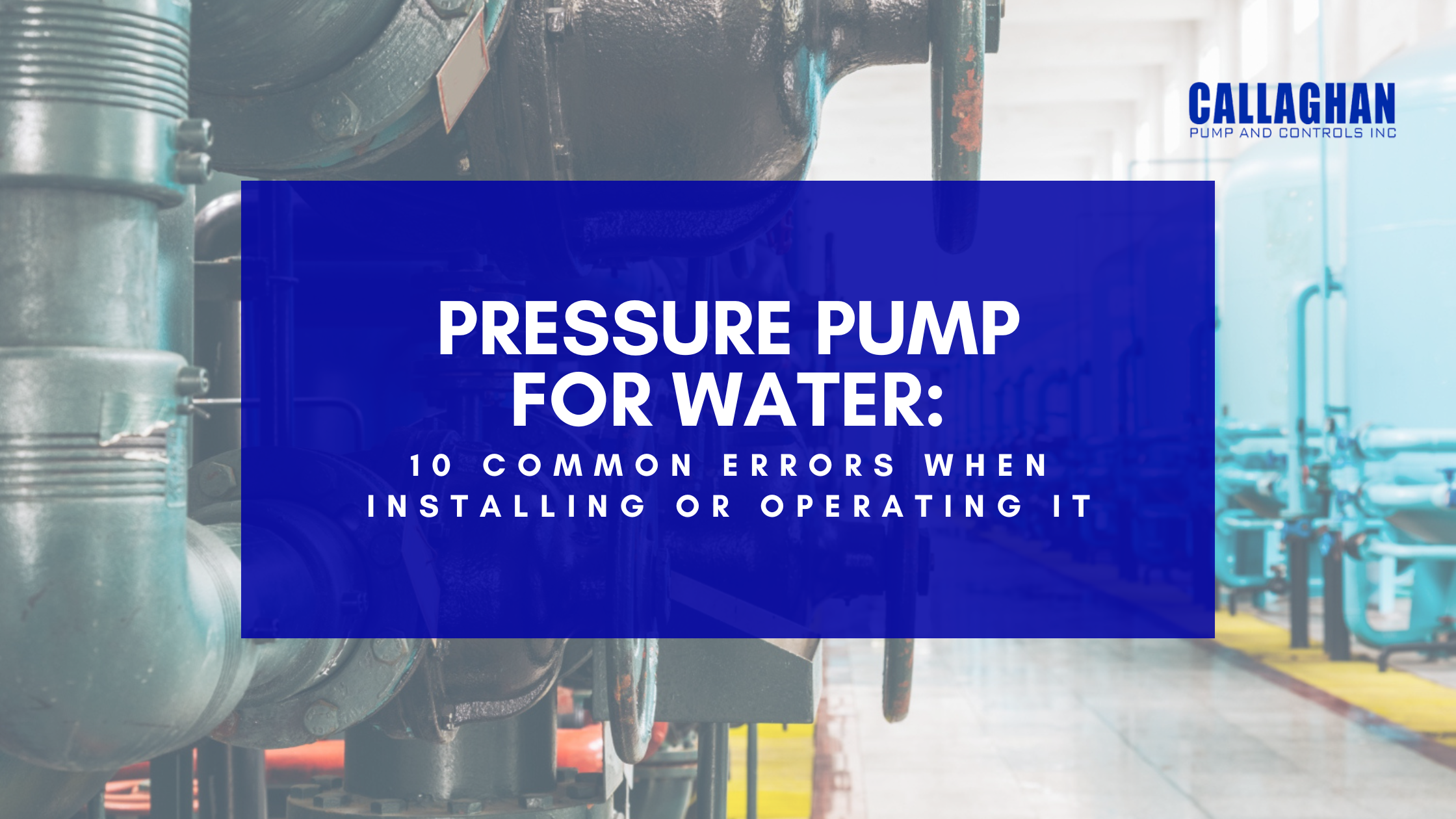
July 31st, 2023
When it comes to domestic water pump systems, the benefits are clear. But what about the common mistakes homeowners or businesses make when installing or operating them? Any error in the operation of a water booster pump can turn an advantage into a disadvantage. Continue reading to learn more about domestic booster pumps.
The purpose of a booster pump is to supply water to a building where mains water pressure is not sufficient to meet the demand. It is used to provide enough pressure for the water to reach all water points. Some buildings require water storage to meet water demand, and some can store up to a day’s worth of water. The same type of water storage can also be used as a break in a water system.
Remember that a faulty or obsolete water booster pump can result in significant problems at a heavy remedial cost. To avoid these costs, you should be able to spot these issues. For a quick checklist of water pump operating and installation issues, keep reading:
One of the common errors when operating or installing domestic booster pumps system is selecting a booster pump that is either too large or too small for the intended application. If the booster pump is too small, it will not provide adequate water pressure. And if it’s too large, it can cause excessive water pressure and damage the pump system.
Incorrect or unprofessional installation of the booster pump can lead to various issues. This may include improper alignment of the pump, motor, piping connections, and casing relief valves. So, it’s crucial to follow the manufacturer’s guidelines during the operation and installation.
If the water pump system design doesn’t account for the specific requirements of the booster pump, issues can arise. Key factors, such as pipe size, valve placement, and pressure tanks, should be considered for optimal performance. Failures to design the pump system properly can lead to insufficient water pressure or excessive cycling of the booster pump.
Air in the suction line is known as cavitation. It can cause operational problems. This usually happens when there are leaks in the suction line or when the pump is not primed properly. Cavitation can occur if the pump operates at low water pressure and causes the formation of vapor bubbles. This may lead to noise, reduced performance, and potential damage to the booster pump.
Like any mechanical system, domestic booster pumps require regular maintenance. If you fail to perform routine maintenance tasks, be ready to experience decreased efficiency, premature wear and tear, and potential breakdowns. These tasks include cleaning filters, checking for leaks, lubricating bearings, or inspecting electrical connections.
Domestic booster pumps rely heavily on electrical power to operate. Common electrical errors, such as improper wiring, incorrect voltage supply, or inadequate protection against power surges, can result in pump failure. So, it’s important to ensure that the electrical system is properly installed and connected to a suitable power source.
Monitoring the performance of your water booster pump is crucial to identify any issues early on. If you do not regularly check pressure levels, flow rates, and other relevant parameters, it can result in overlooked issues that could cause damage to the pump.
Faulty seals are also responsible for pump failure. An improper seal or misaligned gasket can hurt the performance of the pump. For example, improper installation also causes immediate leakage from the mounting surface. Also, avoid re-using old seals and the wrong seal.
Noises and vibrations normally suggest issues within the pressure pump for water. These issues mainly include bearing failures, foreign bodies in the pump, and poorly installed or supported pipework. So, we recommend you hire a pump engineer to resolve the issue.
Contamination can severely impact your health and safety. So, make sure that you keep your eyes peeled for contamination. This usually comes down to the management and cleaning of the pump. In such cases, the storage tank and the pump system should be drained and tested.
Still unsure how to detect and resolve pump errors, it’s advisable to consult with a professional. Be sure to refer to the manufacturer’s guidelines when installing or operating a pressure pump for water. Contact us for more info on casing relief valves or domestic water pump systems.
john@callaghanpump.com,
eileen@callaghanpump.com,
dan@callaghanpump.com,
sales@callaghanpump.com,
service@callaghanpump.com












